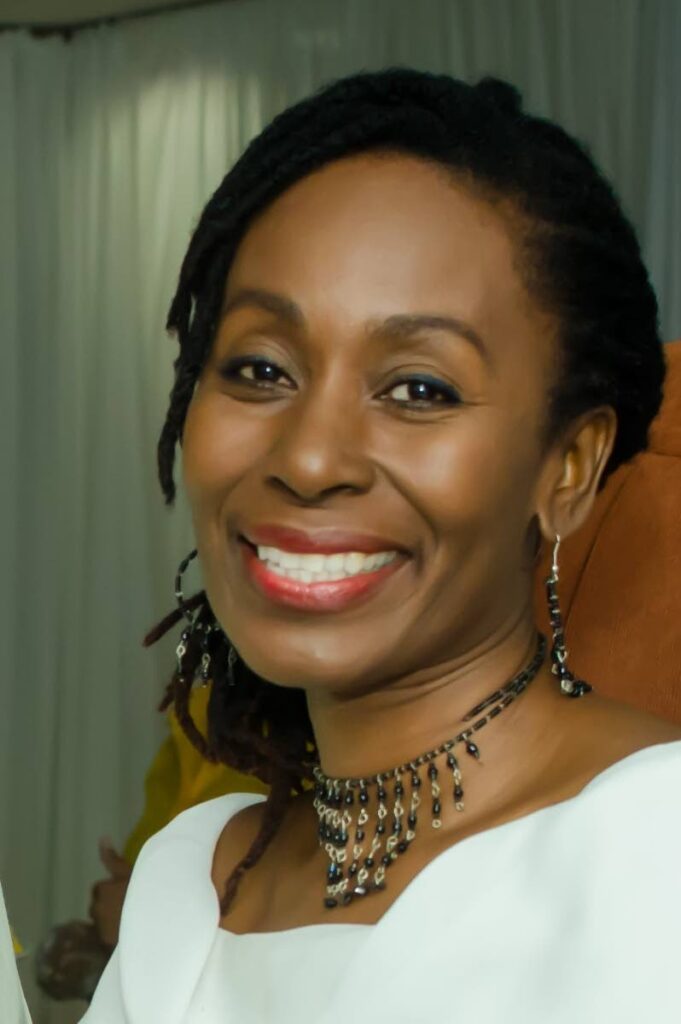Embrace our folklore, not Halloween

Culture Matters
Dara E Healy
Now, La Diablesse is the devil woman
She always wearing a big hat to cover she face
And a long dress down to the ground to cover she foot
’Cause La Diablesse have one good foot and one cow foot
And nowadays ah hear they wearing pants suit
So look to your left and look to your right
You might be sitting down next to a La Diablesse!
– Paul Keens-Douglas – Jumbies, Duppies and Spirits
I SENSE A deep ambivalence towards our folklore. On the one hand, the average citizen has some general idea about soucouyant, Papa Bois, Mama D’lo or Gang Gang Sara. On the other, our eager adoption of Halloween witches, vampires and the baffling consumption of candy threatens to expose our douen-like behaviour as described by Leroy Clarke.
In his paintings and poetry about the subject, the master-artist reflected that too often we behave like douens with our feet turned backwards, not sure what direction to go in, overly eager to embrace foreign culture. Was he right and why is it important to embrace our local traditions?
The celebration of Halloween has ancient roots, founded on the spiritual practices of the Druids of early Britain, around the second century. The Druids believed in man’s connection to universal energies. The change of the season from autumn into the colder, darker winter months was a time of reflection and making plans for protection from the harsh elements.
October 31 was significant to the period of transition. Villagers would dress in costumes and light bonfires to keep away the ghosts of the dead who they believed would return to Earth on this night. This event was called Samhain (pronounced sah-win) and marked the start of a new year.
In time, November 1 was declared as a day to honour all saints. The day before All Saints Day became known as All Hallows Eve (hallow means holy or sacred) and later, Halloween. Immigrants to the US recreated their traditions. The practice of wearing costumes and lighting fires to ward off ghosts transformed into dressing up and doing performances or magic tricks for the reward of food or treats. In the US Halloween is now the second largest commercial holiday after Christmas, with billions spent on decorations, costumes and candy.
The history of this celebration and the fact that Barbie is said to be the most popular costume this year, make our fascination with Halloween even more "douen-like." Our folklore, at least the more popular elements, are predominantly African in origin, with European elements such as the French names of many of the characters. Mammy Water, as Mama D’lo is known in Nigeria and Ghana, has links to Osun in the Ifa/Orisha belief system.
Maureen Warner-Lewis notes there are many African proverbs and folktales warning against becoming obsessed with external beauty as with La Diablesse. Dwen is a Kalabari or Efik/Ibibio phrase that speaks to African traditions of keeping new-born babies away from family. My grandmother used to push out her mouth and order people to “kiss de child on de foot!”
Unfortunately, Western attitudes towards African culture permeated our consciousness, tainting how we interpret our folklore. For instance, at one stage the silk cotton tree was described as sinister or evil. In fact, slave masters cut them down when they recognised their spiritual significance to indigenous peoples and Africans. This is, however, contradicted by the many stories, locally and across the diaspora, of how runaway enslaved were protected by the tall roots of the trees.
We have also been denied an opportunity to benefit from the lessons of our folklore characters. In an era where experts are warning against the collapse of global ecosystems, Papa Bois reminds us to care for forests and safeguard our environment. As we battle the growing issue of unsafe sexual practices, La Diablesse is a reminder of the need to tread carefully. Gang Gang Sara could not fly home to Africa because she had eaten salt. As diabetes and childhood obesity threaten the health of nations, this is a critical story. And in the face of rising child abuse, the playful douens warn us to protect our children, keep them safe.
Daily, the world becomes more fragile; war and conflict are circling. We need to look inwards and pay more attention to the solutions in our culture. As uncle Leroy might say, it is time to turn around our feet.
Dara E Healy is a performance artist and founder of the Indigenous Creative Arts Network – ICAN


Comments
"Embrace our folklore, not Halloween"